American Chestnut
sam_md
12 years ago
Featured Answer
Sort by:Oldest
Comments (50)
drrich2
12 years agolast modified: 9 years agoToronado3800 Zone 6 St Louis
12 years agolast modified: 9 years agoRelated Discussions
American Chestnut Max Height and Diameter?
Comments (6)"I was wondering if anyone knew the max height and diameter of an American Chestnut." The answer to this would be NO! One would have to rely on old, unsubstantiated reports and would have no way to really know if they were correct. ____________________________________________________________ ____________________________________________________________ Examples of reports thought to be reasonable can be found in resources such as The Native Tree Society's website. For more info about these entries, see the full article, linked below. North Carolina American Chestnut Joseph S. Illick stated that a chestnut at Francis Cove, near Waynesville, Haywood County, had a trunk diameter of seventeen feet. This is considered the greatest known diameter of any eastern hardwood. -ref.: Grimm, William C. 1967. Familiar Trees of America, p. 109. -ref.: Detwiler, Samuel B. "The American Chestnut Tree," American Forestry, October 1915. -Comments: Randy Cyr of ENTS reported (1/18/2004) that he had interviewed a relative of the tree's owner who knew the stump as a boy, and said the tree was hollow, single-trunked, and was cut for firewood, but any photographs had been lost. American Chestnut A. J. Sharp reported an ankle-high stump of a chestnut in the Greenbrier section of the Great Smoky Mountains National Park that was "13 feet the long way across." -ref.: Grimm, William C. 1967. Familiar Trees of America, p. 109. -Comments: It seems curious that the tree was cut so low. Perhaps the trunk was hollow, and was cut for firewood, or was on a slope, and was cut low on the uphill side. American Chestnut Girth 33' 6", height 75'. "Great Smoky Mountains." Lane does not indicate whether this tree was in North Carolina or Tennessee. -ref.: Lane, Ferdinand C. 1953. The Story of Trees, p.67. ____________________________________________________________ Tennessee American Chestnut Circumference 28 1/2 feet at four feet above grade. Located at Porters Flats, Greenbrier Cove, Great Smoky Mountains National Park, Sevier County. -ref.: 11/19/1933 photo, Flora and Fauna Section, Albert "Dutch" Roth Digital Photograph Collection, University of Tennessee. (via Internet). ____________________________________________________________ New York American Chestnut Girth (1921) 26 feet. Located at Esopus (ca. 15 miles NNW of Poughkeepsie). Tree died before 1927. -ref.: Illick, Joseph S. 1927. Common Trees of new York, p.12. ____________________________________________________________ Maryland American Chestnut A huge chestnut cut in 1895 by a tenant on the farm of D. H. Zile was eleven feet in diameter. The trunk and larger limbs were dynamited, and the tree yielded fifteen cords of firewood. It was said to be "the biggest tree in the county, if not the state." Located near Taylorsville, a community on South River, Anne Arundel County. -ref.: "One Hundred Years Ago." The Baltimore Sun, 5/21/1995, quoting from an article in the American Sentinel of 5/18/1895. (per Internet) Here is a link that might be useful: Great Eastern Trees, Past and Present by Colby B. Rucker...See MoreMixing pure American chestnuts with Oikos hybrid chestnuts
Comments (1)Should work OK. Much the same method has been used to select the hybrids in the first place. Resin...See Moreamerican chestnut: tacf vs accf
Comments (14)Brandon - have you worked with either org? Do you have a view as to whether ACCF has staying power - that it will last beyond the retirement of the senior researchers? My fear with ACCF is that it will fade away; whereas TACF seems to have the organizational strength to keep going. Although I take your point that that could be just fundraising / marketing... I had an email correspondence with ACCF that I found really strange. I had heard about an arboretum nearby that had found a multi-acre stand of surviving chestnuts a decade or so ago; and that the arboretum was working with chestnut researchers . I asked the woman at ACCF if they were working with that particular arboretum. She wrote back rather curtly that they had never heard of it and were not interested in new genetic material. Both statements I thought were really strange. It seems like they would want to be up to speed on discoveries of, and get their hands on, any surviving native genetic material... It just increased my nagging fear that they have a very narrow, insular view of their mission and how to carry it out...that its more of an academic research project than a full out effort to save the tree. Which I think is a shame....See Morecold tolerant pure American Chestnut seed
Comments (11)"Yeah I am constantly amazed by the crap they stop at the border. Not terrorists or anything, but oranges and trees and, you know, critical stuff." Corkball, dude, you really gotta get out more! There are real, real, real good reasons that we attempt to keep certain foods and plant materials from coming into the country. I thought anyone that was on Gardenweb would be familiar with the problems involved with bringing pathogens into the country. As for terrorists, we seem to be doing a dang good job, now, of keeping them out of this country and monitoring the ones that may be here (knock on wood)....See Morefamartin
12 years agolast modified: 9 years agodenninmi
12 years agolast modified: 9 years agocalliope
12 years agolast modified: 9 years agofarmboy1
12 years agolast modified: 9 years agoUser
12 years agolast modified: 9 years agoSmivies (Ontario - 5b)
12 years agolast modified: 9 years agodrrich2
12 years agolast modified: 9 years agojimbobfeeny
12 years agolast modified: 9 years agogreenthumbzdude
12 years agolast modified: 9 years agolucky_p
12 years agolast modified: 9 years agocalliope
12 years agolast modified: 9 years agomackel_in_dfw
12 years agolast modified: 9 years agolucky_p
12 years agolast modified: 9 years agomackel_in_dfw
12 years agolast modified: 9 years agolucky_p
12 years agolast modified: 9 years agomackel_in_dfw
12 years agolast modified: 9 years agolucky_p
12 years agolast modified: 9 years agocorkball
12 years agolast modified: 9 years agotim_treenut
12 years agolast modified: 9 years agoUser
12 years agolast modified: 9 years agodrrich2
12 years agolast modified: 9 years agomackel_in_dfw
12 years agolast modified: 9 years agoncstockguy
11 years agolast modified: 9 years agoHuggorm
11 years agolast modified: 9 years agoLiz321
11 years agolast modified: 9 years agoDzitmoidonc
11 years agolast modified: 9 years agoDzitmoidonc
11 years agolast modified: 9 years agojimbobfeeny
11 years agolast modified: 9 years agonutsaboutnuts
11 years agolast modified: 9 years agogreenthumbzdude
11 years agolast modified: 9 years agojocelynpei
11 years agolast modified: 9 years agobengz6westmd
11 years agolast modified: 9 years agojocelynpei
11 years agolast modified: 9 years agobengz6westmd
11 years agolast modified: 9 years agojimbobfeeny
11 years agolast modified: 9 years agonandina
11 years agolast modified: 9 years agoalabamatreehugger 8b SW Alabama
11 years agolast modified: 9 years agobengz6westmd
11 years agolast modified: 9 years agobengz6westmd
11 years agolast modified: 9 years agojoeschmoe80
11 years agolast modified: 9 years agojocelynpei
11 years agolast modified: 9 years agogreenthumbzdude
11 years agolast modified: 9 years agojoeschmoe80
11 years agolast modified: 9 years agogreenthumbzdude
11 years agolast modified: 9 years agogekkodojo
11 years agolast modified: 9 years agothaethan11
10 years agolast modified: 9 years agothaethan11
10 years agolast modified: 9 years ago
Related Stories

KITCHEN DESIGNKitchen of the Week: Chestnut and an Open Fire in Connecticut
Antique chestnut boards give a kitchen with a wood-burning oven vintage flair, balancing its modern amenities
Full Story
GARDENING GUIDES13 North American Backyard Birds to Know
Find out about these enchanting native species and learn how to attract them to your yard
Full Story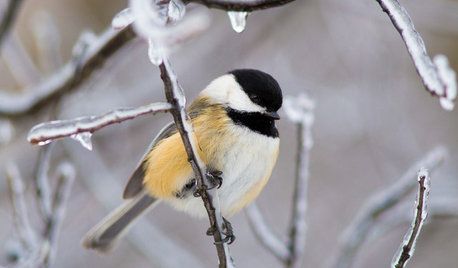
GARDENING FOR BIRDSBackyard Birds: Marvel at Chickadees This Winter
These North American natives flock to bird feeders and entertain with their complex birdcalls
Full Story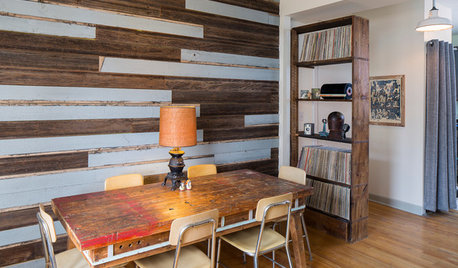
HOUZZ TVHouzz TV: Cool Reclaimed Wood Projects Fill a Craftsman’s Home
Using barn wood, beadboard and beams, this homeowner has crafted furnishings and features for his family’s Chicago home
Full Story
GARDENING GUIDESGarden-Friendly Native Alternatives to Overplanted Exotics
There are lots of gorgeous, wildlife-friendly native plants ready to make an appearance in your garden
Full Story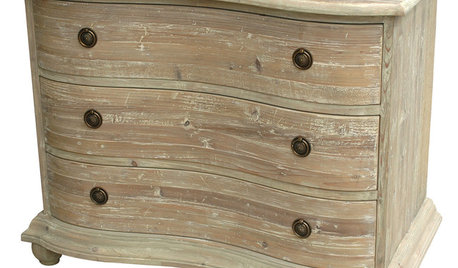
PRODUCT PICKSGuest Picks: Reclaimed Wood Pieces Full of Character
Bring a sense of history and depth to your rooms with furniture, lighting and art made from upcycled wood
Full Story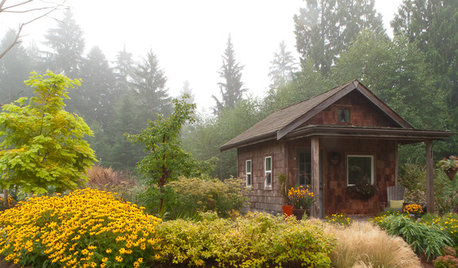
PLANTING IDEASGreat Garden Combo: A Fall Landscape Scene That Lasts
Span the seasons with trees, shrubs and grasses that offer color and texture in abundance
Full Story
COLOR8 Reasons to Paint Your Interior Trim Black
Hide imperfections, energize a space, highlight a view and more with a little bit of darkness that goes a long way
Full Story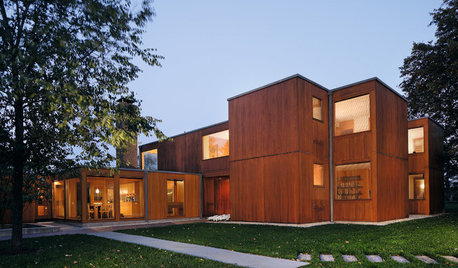
BOOKSLouis Kahn's Modern Residential Masterpieces Get Coverage at Last
See 9 of the celebrated architect's lesser-known projects, U.S. homes, in a new book filled with photos and details
Full Story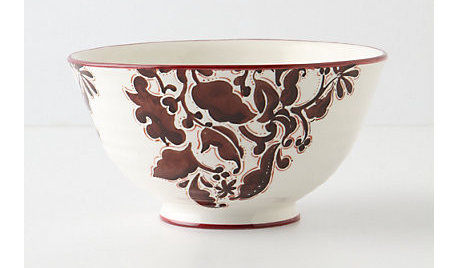
PRODUCT PICKSGuest Picks: A Cozy Holiday Fete
Entertain elegantly with 20 home pieces to help perfect your winter party
Full Story






sam_mdOriginal Author